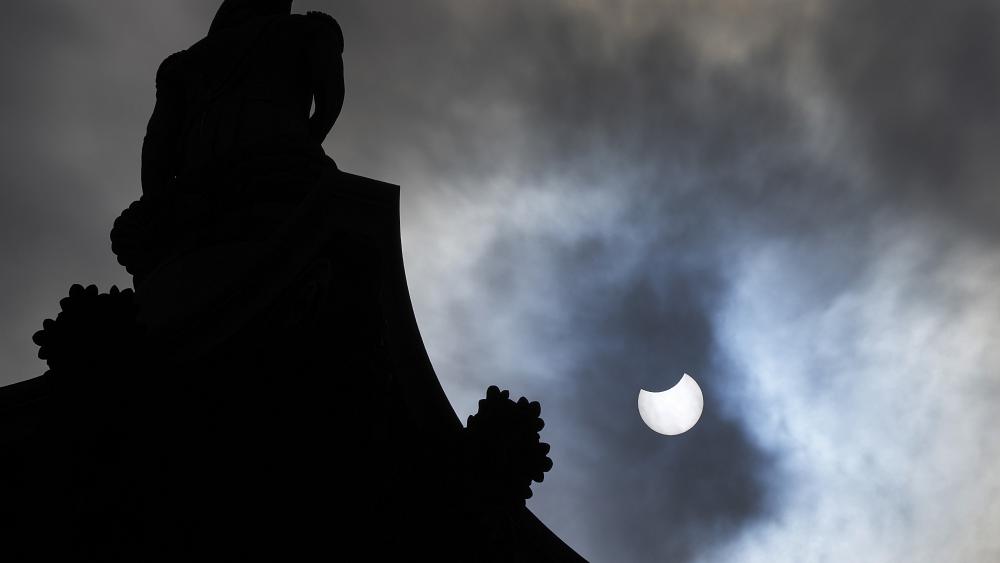
The first solar eclipse of the year was visible in many parts of Europe on Thursday, with Siberia privy to the best view.
The celestial event created a “ring of fire” or annular eclipse because the sun was seen as a ring around the moon.
A solar eclipse takes place at the phase of a new moon when it moves directly between the sun and Earth. This causes the moon to block light from the sun and cast a shadow on Earth.
Similar to a partial eclipse, an annular eclipse doesn’t cover the whole moon. This is because the moon is at its furthest distance from Earth, so the sun appears slightly bigger than the moon.
As the moon passes in front of the sun, it appears as a dark disk with a glowing ring. This appearance is why an annular eclipse has been dubbed the “ring of fire”.
The rare sight was fully visible only by people living in the highest latitudes, in northwestern Canada, Russia’s far north, Greenland and the North Pole.
The annular eclipse was also visible, but only partially, in northwestern North America, much of Europe, including France and Great Britain, as well parts of Asia.
The eclipse lasted about two hours, between 11 am and 1 pm CEST. It reached its peak between 11:55 am and 12:20 pm CEST.
Astronomy enthusiasts took to social media to share their best shots of the celestial event.
It is important to take proper precautions when observing a solar eclipse so as not to damage eyesight. Those who want to observe the eclipse should therefore use approved glasses, lenses or filters.
Another option is to use a pinhole projector that can be made at home with basic staples.
Related posts:
Views: 0
 RSS Feed
RSS Feed

















 June 10th, 2021
June 10th, 2021  Awake Goy
Awake Goy 


 Posted in
Posted in  Tags:
Tags: 
















